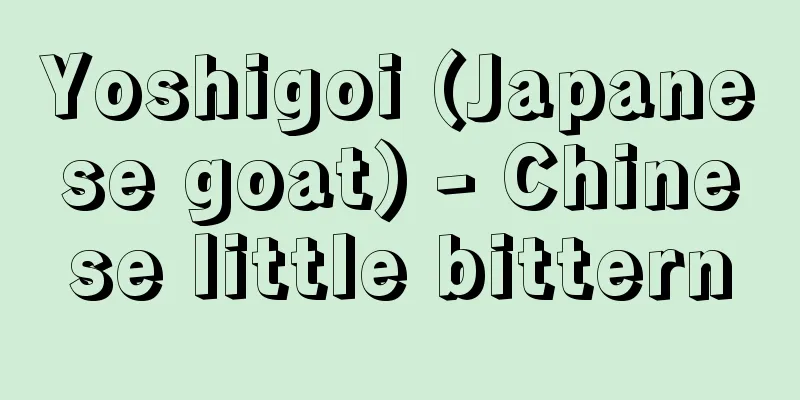Strip show - Sutoripusho (English spelling) strip show

|
Strip tease is also called strip tease. It is a spectacle in which dancers take off their clothes to music, and can also be called nude shows in which the dancers are naked from the beginning. It is said to have started with burlesque (comedy) in American music halls, which became popular in the late 19th century, but there is also a theory that it began when dancers became nude in Paris music halls from 1893 to the following year. It became a major attraction of American burlesque around 1920 after World War I, and spread around the world around the time of World War II. In Japan, its origins can be traced back to the dance of Ame-no-Uzume-no-Mikoto in front of the Heavenly Rock Cave and female kabuki, but the first show is generally considered to have been the picture frame show "The Birth of Venus," planned and directed by Hata Toyokichi (1892-1956) at the Teitoza 5th Floor Theater in Shinjuku, Tokyo in January 1947 (Showa 22). The show attracted a large audience, with half-naked models, modelled on famous Western paintings, framed on the stage. However, the models in this show remained motionless, and it is said that the original meaning of stripping began in May of the same year, when dancers removed their bras in a performance of "Tokyo Follies" at the fourth floor theatre of Toyoko Department Store in Shibuya. After this, it spread to various places in the form of bamboo shoot dance and nude shows, and at one point specialist theatres lined the red-light districts, popularising terms like sequins and butterfly, and becoming a form of popular entertainment that symbolised the post-World War II social climate. As audiences demanded greater stimulation, it escalated with bathtub shows in the 1950s, special shows, all-strip shows and lesbians in the 1960s, SM and manaita shows in the 1970s, and while it remains a constant target of crackdowns by the authorities, orthodox stripping, which involves dancing, is on a steady decline. [Moriwaki Itsuo] Source: Shogakukan Encyclopedia Nipponica About Encyclopedia Nipponica Information | Legend |
|
ストリップティーズstrip teaseとも、略してストリップともいう。踊り子が音楽にあわせて衣類を脱いでゆく見せ物で、初めから裸体のヌードショーも含めていうことがある。19世紀後半から盛んになったアメリカのミュージック・ホールのバーレスク(笑劇)から始まったとされるが、1893年から翌年にかけパリのミュージック・ホールで踊り子がヌードになったのが始まりという説もある。第一次世界大戦後1920年ごろからアメリカ・バーレスクの主要な出し物となり、第二次世界大戦前後から世界に広がった。日本では天鈿女命(あめのうずめのみこと)の天の岩戸前の踊りや女歌舞伎(かぶき)に淵源(えんげん)を求めることもできるが、一般には1947年(昭和22)1月に東京・新宿の帝都座五階劇場で、秦豊吉(はたとよきち)(1892―1956)が企画・演出した額縁ショー「ヴィーナスの誕生」が第1号とされる。泰西名画に見立てた半裸のモデルが、舞台に立てた額縁に収まる趣向で、観客が詰めかけた。ただし、このショーのモデルが静止したままであり、本来の意味のストリップは、同年5月渋谷の東横百貨店四階劇場の『東京フォーリーズ』公演で、踊り子がブラジャーをとったのが最初だともいう。このあと、たけのこダンス、裸ショーといった形で各地に広がり、一時は盛り場に専門劇場が軒を並べ、スパンコール、バタフライなどの用語を一般化させ、第二次世界大戦後の世相を象徴する大衆娯楽となった。観客のより強い刺激要求から、1950年代風呂桶(ふろおけ)ショー、特出し、1960年代全スト、レズ、1970年代SM、マナ板ショーとエスカレートし、当局の絶え間ない取締り対象である反面、踊りを見せる正統派ストリップは衰退の一途をたどっている。 [森脇逸男] 出典 小学館 日本大百科全書(ニッポニカ)日本大百科全書(ニッポニカ)について 情報 | 凡例 |
Recommend
Kurikuma - Kurikuma
It was an ancient place name (town name) in Kuse C...
Kim Gu
Korean politician and independence movement leade...
Kanda (Shizuoka)
...Southwest foot of Mt. Fuji, Fujisan Hongu Seng...
Marquis of Oaxaca Basin
...Later, he came into conflict with royal offici...
Footman's House
…The difference between a farmhouse and a samurai...
Turing Machine
It is a thinking calculating machine conceived by...
Alto Flute - Alto Flute
...Some instruments can play as low as B. Other r...
Uchikake Kosode - Uchikake no Kosode
…(5) Foiled kosode: A gorgeous item with gold and...
Salicornia fruticosa (English name) Salicornia fruticosa
In Madagascar, rubber was once extracted from Eup...
Camellia maliflora (English spelling)
…[Yoshiharu Iijima]. … *Some of the terminology t...
Shinsengumi (Shinsengumi) - Shinsengumi
The Roshigumi was formed in Edo in 1862 to control...
Enlightened Absolutism
A form of absolute monarchy that emerged in develo...
Holding something high - Holding something high
…This refers to the amount of rice produced by a ...
Official rank - Kan'i
A general term for government positions and ranks ...
Yuan Shu; Yuan Shu
[Born] Shaoxing 1 (1131) [Died] Kaiji 1 (1205) A s...







![Ashibetsu [city] - Ashibetsu](/upload/images/67cad3ca59410.webp)

